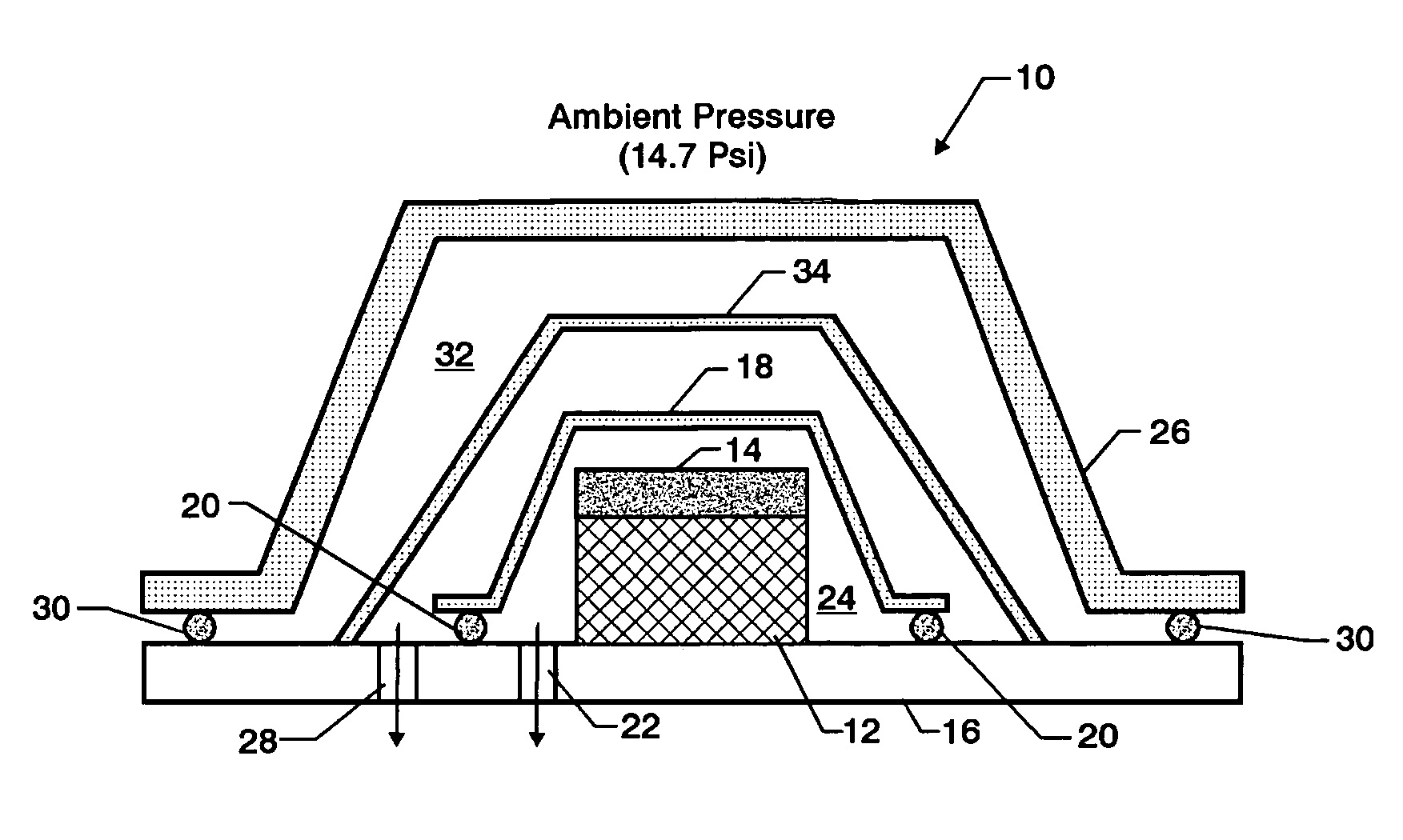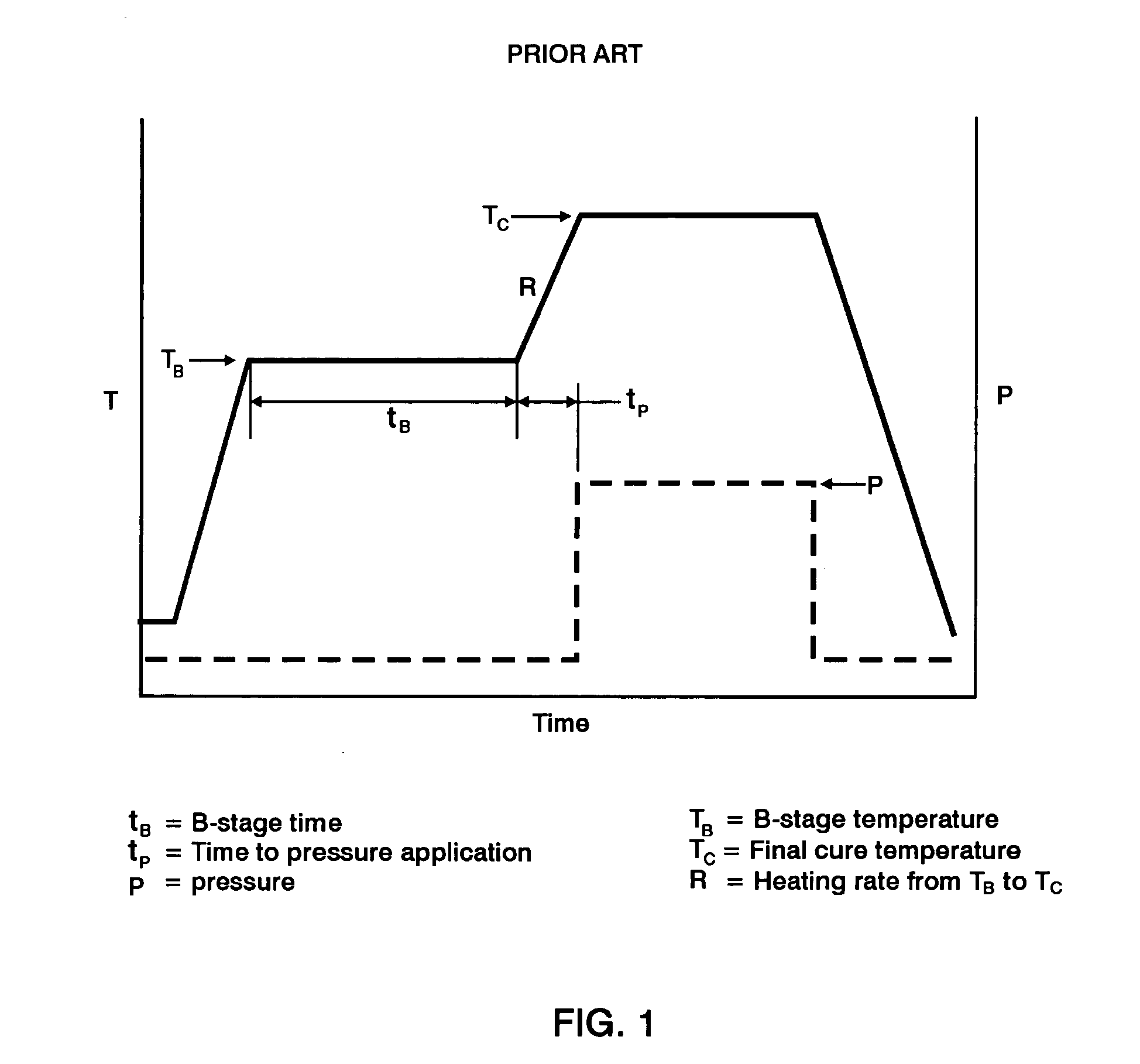Double vacuum bag process for resin matrix composite manufacturing
a technology of resin matrix and vacuum bag, applied in the direction of chemistry apparatus and processes, hollow wall articles, other domestic objects, etc., can solve the problem of inability to achieve, achieve precise net shape control, reduce void content, and enhance mechanical properties and performances
- Summary
- Abstract
- Description
- Claims
- Application Information
AI Technical Summary
Benefits of technology
Problems solved by technology
Method used
Image
Examples
Embodiment Construction
[0026]The schematic drawing shown in FIG. 3 is of a double vacuum bag (DVB) molding assembly 10 for composite manufacturing. A composite 12 illustrated as fiber reinforced reactive resin matrix prepregs are laid up between a caul plate 14 and a tool plate 16. The caul and tool plates 14, 16 may be constructed of steel or other appropriate material.
[0027]A first barrier, such as a vacuum bag 18 (designated as inner bag), encloses the caul plate 14 and composite 12 relative to the tool plate 16 and is sealed by one or more seals 20 relative to the tool plate 16. A first vacuum port 22 is preferably built through the tool plate 16 or otherwise provided to communicate the interior 24 with a vacuum pump (not shown) to provide a first environment.
[0028]A second barrier, or bag 26 (designated as the outer bag) is preferably assembled in a somewhat similar fashion, with a second vacuum port 28 located intermediate to the seals 20 connecting the first bag 18 to the tool plate 16 and the seal...
PUM
| Property | Measurement | Unit |
|---|---|---|
| molar ratio | aaaaa | aaaaa |
| molar ratio | aaaaa | aaaaa |
| temperature | aaaaa | aaaaa |
Abstract
Description
Claims
Application Information
 Login to View More
Login to View More - R&D
- Intellectual Property
- Life Sciences
- Materials
- Tech Scout
- Unparalleled Data Quality
- Higher Quality Content
- 60% Fewer Hallucinations
Browse by: Latest US Patents, China's latest patents, Technical Efficacy Thesaurus, Application Domain, Technology Topic, Popular Technical Reports.
© 2025 PatSnap. All rights reserved.Legal|Privacy policy|Modern Slavery Act Transparency Statement|Sitemap|About US| Contact US: help@patsnap.com



